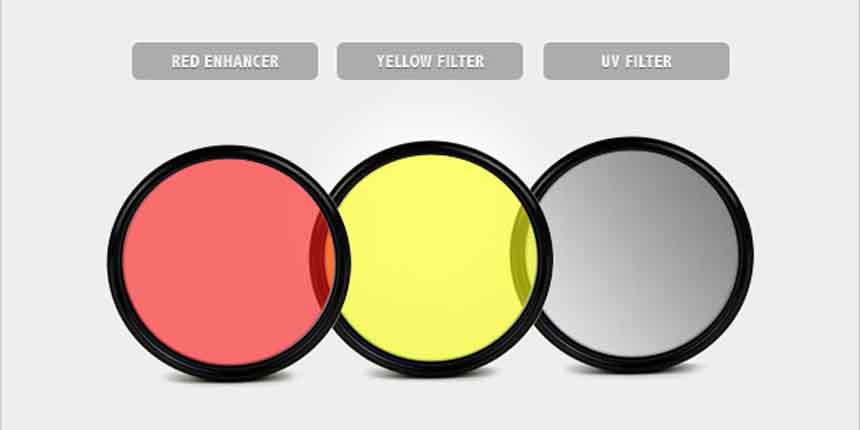
Apr 21, 2018 Written by SAMIUL ANSARI Filters

In photography and videography, a filter is a camera accessory consisting of an optical filter that can be inserted into the optical path. The filter can be of a square or oblong shape and mounted in a holder accessory, or, more commonly, a glass or plastic disk in a metal or plastic ring frame, which can be screwed into the front of or clipped onto the camera lens.
Filters are widely used in photography and cinematography and while some only use filters in rare situations, others rely on filters for their everyday work.
Types of Filter and their uses,
a. UV/Clear/Haze Filter - Protects the front element of a lens from dust, dirt, moisture and potential scratches. High quality UV filters can be permanently mounted on lenses with a minimum impact on image quality.
b. Polarizing Filter- Filters out polarized light, dramatically reducing reflections, enhancing colors and increasing contrast. Can be used for any type of photography. Polarizing filters are typically circular, allowing for easy control of the effect of polarization.
c. Neutral Density (ND) Filter- Reduces the amount of light entering the lens, thus decreasing camera shutter speed. Useful for situations where motion blur needs to be created (rivers, waterfalls, moving people) or large apertures must be used with flash to avoid overexposure.
d. Hard-Edge Graduated Neutral Density (GND) Filter- Hard-edge GND filters are primarily used in high contrast situations, where the sky is much brighter than the foreground and the horizon is flat. These filters are always rectangular (giving the ability to move them in all directions) and are typically used with filter holders.
e. Soft Focus Filter- Soft focus filters, do exactly that, they reduce the sharpness of an image, but only to an extent that is barely noticeable. They are useful in shooting close up shots of people’s faces. With the help of a little diffusion; imperfect skin conditions are replaced by silky smooth skin.
f. Filters for B&W Photography- There are specific filters for B&W photography that lighten similar colors and darken opposite colors, thereby enhancing the monochromatic look. There are Red, Orange, Yellow, Green and Blue filters for use in B&W photography.
g. Close-Up Filter- Also known as “diopter”, a close-up filter allows a lens to focus closer on subjects. These filters are only used for macro photography.
h. Color/Warming/Cooling Filter- Corrects colors, resulting in a change in camera white balance. Some color filters can subtract colors, blocking one type of color and allowing other colors through. These types of filters were popular for film. They are rarely used in digital photography, since their effects can be easily applied in post-processing.
i. Special Effects Filter- There are a few different types of special effects filters. Star filters make bright objects look star-like; softening/diffusion filters create a “dreamy” look used for portraits, multivision filters create multiple copies of a subject; infrared filters block infrared and pass visible light; bokeh filters have a certain shape cut in the middle of the filter that makes bokeh highlights have the same shape, etc.